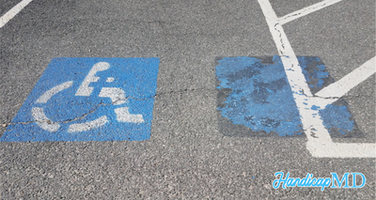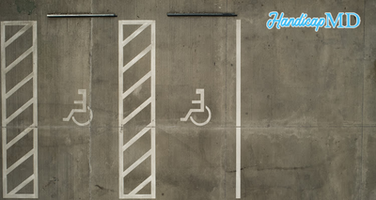
Myths vs. Facts: Debunking Common Misconceptions about Handicap Placards in Oregon
Introduction
Handicap placards play a vital role in providing accessibility and convenience to individuals with disabilities in Oregon. However, there are several myths and misconceptions surrounding these placards that can lead to misunderstandings and misinformation. In this article, we aim to debunk some of the common myths about disability tags in Oregon and provide you with accurate information to ensure a better understanding of their purpose and usage.
Myth: Handicap Placards are Easy to Obtain
Fact: While obtaining a disability tag is a relatively straightforward process, it does require proper documentation and medical certification. The Oregon Department of Motor Vehicles (DMV) has specific guidelines in place to ensure that the placards are issued to individuals who genuinely require them. Applicants must provide accurate medical information and meet the necessary criteria to qualify for a disability tag.
Myth 1: Handicap Placards Are Only for Wheelchair Users
Fact: One of the most prevalent myths about handicap placards is that they are only meant for individuals who use wheelchairs. In reality, handicap placards are issued to individuals with a wide range of disabilities, including those who have difficulty walking long distances, use mobility aids such as walkers or canes, or have medical conditions that limit their mobility.
Myth 2: Handicap Placards Are Only for Permanent Disabilities
Fact: Another common misconception is that handicap placards are only issued to individuals with permanent disabilities. In Oregon, handicap placards can be issued for both temporary and permanent disabilities. Temporary placards are available for individuals who have a temporary disability or medical condition that impairs their mobility for a limited period, such as recovering from surgery or an injury.
Myth 3: Handicap Placards Are Easy to Obtain Illegally
Fact: Some people believe that obtaining a handicap permit is easy and that individuals can easily obtain them illegally. However, the process of obtaining a handicap placard requires providing medical documentation and meeting specific eligibility criteria. The Oregon Driver and Motor Vehicle Services Division carefully reviews each application to ensure that only those who genuinely need the placard receive it.
Myth 4: Handicap Placards Allow Unlimited Parking Time
Fact: While having a handicap placard allows individuals to park in designated accessible parking spaces, it does not grant unlimited parking time. In Oregon, individuals with handicap placards must adhere to the time limits specified for the parking space they are using. It is essential to be mindful of the time restrictions to avoid potential penalties.
Myth 5: Handicap Placards Are Valid in All States
Fact: While handicap placards are generally recognized across different states, it is important to note that each state has its own specific regulations regarding their usage. If you plan to travel out of state, it is advisable to familiarize yourself with the parking regulations of that particular state to ensure compliance and avoid any issues.
Myth 6: Handicap Placards Can Be Transferred or Borrowed
Fact: Handicap placards are issued to individuals and are non-transferable. It is illegal to lend or borrow a handicap placard to someone who does not meet the eligibility criteria. Placards are meant to be used exclusively by the person with the disability named on the placard.
Myth 7: Handicap Placards are Only for Wheelchair Users
Fact: Disability tags are not exclusively for wheelchair users. They are designed to assist individuals with various disabilities that may limit their mobility. This includes individuals with conditions such as heart disease, respiratory problems, arthritis, and many others. The purpose of a disability tag is to provide accessible parking options for anyone with a disability that affects their ability to walk or navigate long distances.
Myth 8: Handicap Placards are Not Enforced
Fact: Handicap parking violations are taken seriously by the State. Law enforcement officers actively monitor and enforce handicap parking regulations to ensure that accessible parking spaces are available for those who need them. Illegally parking in a designated accessible parking space without a valid disability sign or license plate can result in fines, towing, or other penalties.
Myth 9: Handicap Placards are Valid Forever
Fact: Disability tags in this State have an expiration date. The duration of the placard varies based on the individual's condition and the recommendation of the healthcare professional certifying their disability. Permanent placards typically have a duration of five years, while temporary placards are valid for six months or as specified by the healthcare professional.
Myth 10: Handicap Placards Can be Used by Anyone in the Vehicle
Fact: Disability tags are issued to individuals, not vehicles. The placard is meant to be used only when the person to whom it was issued is present in the vehicle. It is illegal and unethical to use a handicap placard if the individual it was issued to is not present or does not require accessible parking at that time.
Myth 11: Handicap Placards are Valid in All States
Fact: Disability tags are recognized and honored in most states across the United States. However, it is essential to familiarize yourself with the specific regulations and requirements of each state you plan to visit. While the basic benefits and privileges remain consistent, certain states may have additional rules or variations in the duration of placard validity.
Frequently Asked Questions (FAQs)
Q: Can I renew my handicap placard online in Oregon?
A: Yes, you can renew your disability placard online. The Oregon Driver and Motor Vehicle Services Division provides an online portal for the renewal of disability signs.
Q: Are there any fees associated with obtaining a handicap placard in Oregon?
A: Yes, there is a fee associated with obtaining a disability sign. The fee varies depending on the type of placard and its duration. You can find detailed information about the fees on the Oregon Driver and Motor Vehicle Services Division's website.
Q: Can I use my out-of-state handicap placard in Oregon?
A: Yes, this State recognizes out-of-state disability signs. However, it is important to familiarize yourself with Oregon's specific regulations and adhere to them when parking in the state.
Q: Can I use my handicap placard in private parking lots?
A: Private parking lots have their own rules and regulations regarding handicap parking. It is advisable to check with the parking lot management to determine if your disability sign is valid in their lot.
Q: What should I do if my handicap placard is lost or stolen?
A: If your disability sign is lost or stolen, you should report it to the local authorities and apply for a replacement placard as soon as possible. Contact the Oregon Driver and Motor Vehicle Services Division for further guidance on the replacement process.
Q: Can I park in any accessible parking space with my handicap placard?
A: While having a disability sign allows you to park in designated accessible parking spaces, it is important to adhere to the specific regulations of each parking area. Some spaces may have additional restrictions or time limitations that you need to observe.
Conclusion
Dispelling the myths surrounding disability tags is essential to promote accurate information and understanding. Handicap placards in Oregon are intended to provide accessibility and convenience to individuals with disabilities, regardless of the nature or duration of their disability. By debunking common misconceptions, we hope to promote awareness and encourage proper usage of disability tags. Remember to follow the guidelines and regulations provided by the Oregon Driver and Motor Vehicle Services Division to ensure a positive and respectful parking experience.
.png)






